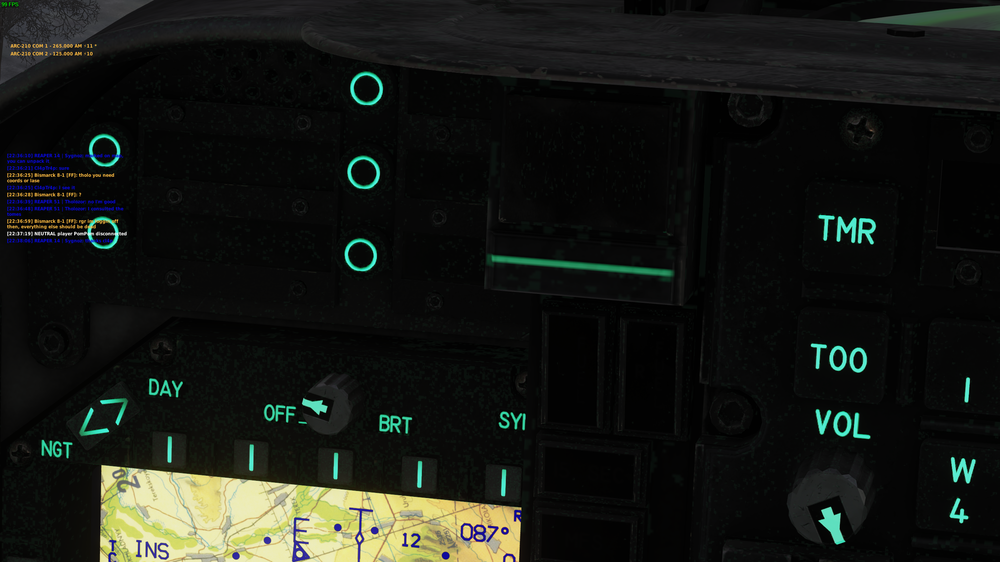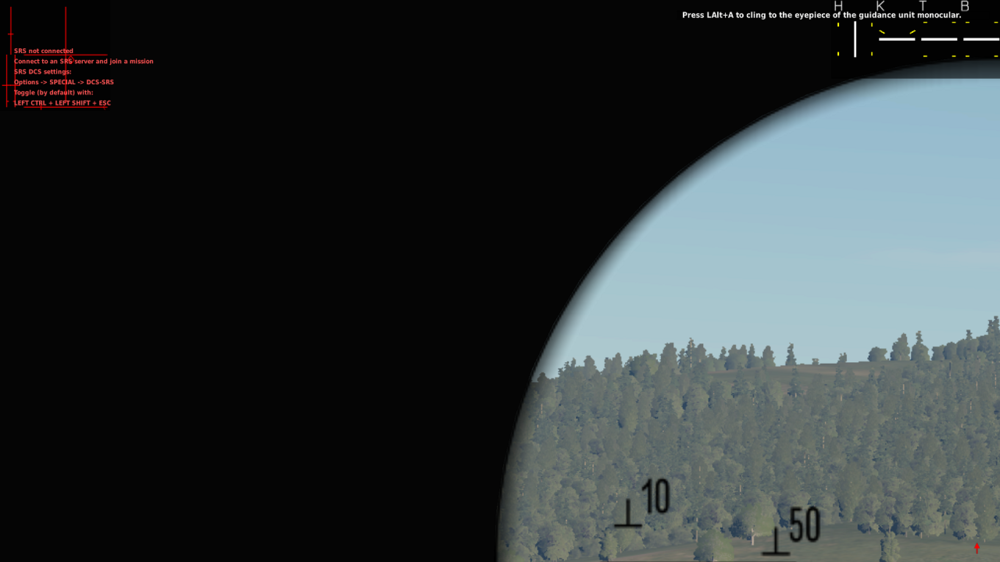

IronChancellor
Members-
Posts
58 -
Joined
-
Last visited
Recent Profile Visitors
The recent visitors block is disabled and is not being shown to other users.
-

Mi-24 Bombing - sight, timer system info on how it's done IRL?
IronChancellor replied to fargo007's topic in DCS: Mi-24P Hind
How does the bomb timer work? -
-
Since theres no onscreen indicator for switch modifiers (the dcs control modifiers, not in-cockpit switches), it would be nice if there was a cancel button that would clear all the active switches.
-
Both aircraft were set to the same weight, so it must be some kind of aerodynamic phenomenon. I am interested as to what exactly is causing such a large difference. So what I gathered from that is that I should go ask the yoyo guy as he is the knowledgeable one. EDIT: @Yo-Yo Hello, could you take a look at my original post in this thread?
-
Not at 8 km. Maybe at 4-6 km against non maneuvering aircraft. But the point remains the Ka-50 will have no problem killing the apache long before the apache is even within launch range.
-
The hellfires have no proxy fuze and 8km range MAX. I doubt they will be able to hit any helicopter that isnt hovering. Also if they fix the skhval the vikhrs will easily put both the gazelle and apache in the dirt. The vikhrs are not affected by countermeasures, fly at mach 2, and have a 12kg proxy fuze warhead. (the aim-9x has a 9kg warhead) I've shot down mirages, mig-29s, and vipers in PVP with the vikhrs. If ED models the ka-50 accurately, jets and helicopters alike will literally run away from it (as they should).
-
I keep seeing eagles flying around at mach 2 with ease. Yet, when I try that in the flanker it takes 5 minutes just to get to mach 1.5. I figured it was the weapons drag+fuel weight, so I put it in the editor with no weapons and reduced fuel so it had the same internal fuel as the eagle. The eagle still accelerated faster than the flanker. Ok, so maybe the extra weight of the flanker is causing more drag which is more important than thrust at supersonic speed? I thusly reduced the flanker's fuel even more until the flanker and eagle had the same total weight. Now I was certain that the flanker would leave the eagle in the dust because it has 44 more kN of thrust with the same weight. The eagle out accelerated the flanker again. This time I let the simulation run until the eagle had reached 2000 kmh. The flanker was still creeping toward 1600 kmh. My question is, why is this so? Does the larger airframe create too much drag to accelerate much past 1500 kmh? Does the airframe compromise aerodynamics in favor of high AoA controllability? Do the air intakes on the flanker not perform as well at supersonic speeds compared to the eagle? Does the space between the engines on the flanker cause some kind of drag at supersonic speeds? tl;dr Why doesn't the flanker's additional 44 kN of thrust make it accelerate faster than an eagle of the same weight? flanker-eagle-acc.trk
-

What do the gyros in the ATGM sight do exactly?
IronChancellor replied to IronChancellor's topic in DCS: Mi-24P Hind
What is this book called? -
I had assumed that they were there to gyro-stabilize the sight (eg. if the helicopter turns the sight stays pointed in the same direction), but that doesn't seem to be the case. Are they related to ATGM guidance?
-
I'm pretty sure whats happening is that server side I am desyncing and pulling 5g with the sight open, causing the gyros to fail. But clientside, Petrovich still says the weapons are ready and the doppler system gives strange readings. https://drive.google.com/file/d/1C3CHRj77qoKixNOymIo7dFB_6zyAKNV3/view?usp=sharing
-
I asked this before in the Mi-8 fourm, but could we get the mag var on the kneeboard like the F14 has?
-
I just fixed mine. Turns out the dcs resolution in system settings was not the same as my monitor.
-




